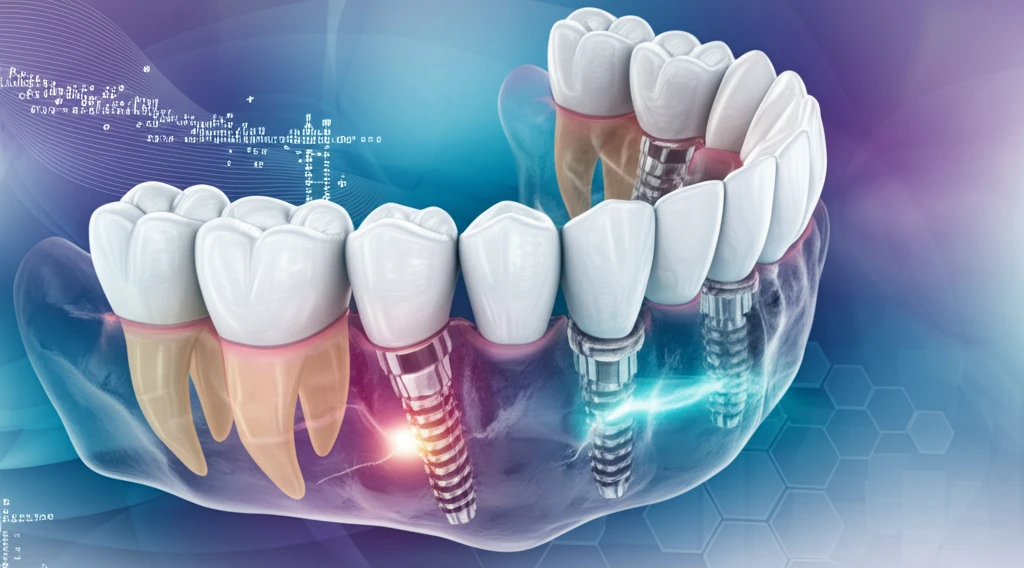
All-on-Four Dental Implants: Finding the Perfect Angle for a Confident Smile
"Exploring the impact of implant angulation on stress distribution for optimal All-on-Four outcomes"
For those facing the challenge of extensive tooth loss, complete dentures can feel like an unstable and inconvenient solution. All-on-Four dental implants offer a revolutionary alternative, providing a fixed and secure set of teeth that look and function like natural ones. This innovative approach involves placing four implants in either the upper or lower jaw to support a full arch of prosthetic teeth.
A key advantage of the All-on-Four technique lies in its ability to avoid extensive bone grafting, even in patients with significant bone loss. By strategically tilting the posterior implants, dentists can maximize contact with available bone, ensuring a stable foundation for the new teeth. But how does the angle of these tilted implants affect the overall success and long-term health of the All-on-Four system?
This article delves into the fascinating world of implant angulation, exploring how different angles impact stress distribution within the jawbone and surrounding tissues. Understanding these biomechanical principles is crucial for both dentists and patients seeking the best possible outcomes with All-on-Four dental implants.
The Angle Effect: How Implant Tilt Influences Stress

The core question surrounding All-on-Four implant angulation is how it affects the forces exerted on the implants themselves and the surrounding bone. Too much stress in one area can lead to bone loss, implant failure, and ultimately, the need for costly revisions. Researchers have been investigating this for years, using sophisticated techniques to measure stress distribution in various All-on-Four configurations.
- Greater angulation (e.g., 35°) may lead to higher stress concentrations at the cervical level (the neck of the implant).
- Moderate angulation (e.g., 15°) can distribute stress more evenly, reducing the risk of localized bone loss.
- The length and design of the cantilever (the extension of the prosthetic teeth beyond the last implant) also play a significant role in stress distribution.
- Proper planning and execution are essential to achieving optimal outcomes with tilted implants.
Finding Your Perfect Angle for a Lasting Smile
Ultimately, the best All-on-Four implant angulation is the one that provides the most stable and predictable outcome for your specific needs. Consulting with an experienced implant dentist is crucial for determining the ideal treatment plan, taking into account your individual anatomy, bone density, and overall health. With careful planning and execution, All-on-Four dental implants can provide a life-changing solution for restoring your smile and confidence.
